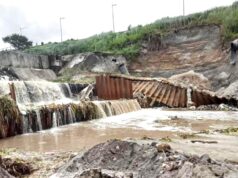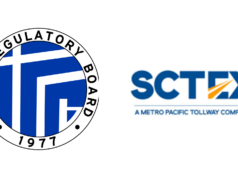CITY OF SAN FERNANDO – Next target: 18 open dumps in Nueva Ecija and five more in Tarlac.
The Environmental Management Bureau (EMB) warned yesterday that mayors and vice mayors in Central Luzon would face administrative and other charges should they fail to fully shut down both open and controlled dump sites to comply with a law passed way back in 2001.
EMB regional director Lormelyn Claudio told Punto that Central Luzon churns out about five million kilos of garbage daily and most of these end up in outlawed dumps mostly located near waterways that flow into the Manila Bay.
However, she noted that 15 open dumps in Bulacan have already been closed and are being rehabilitated after she issued a two-week ultimatum to concerned mayors and vice mayors to comply with the law.
In Pampanga, final reports on compliance are still being awaited from local government hosting another 15 dumps.
Claudio said the EMB issued dumps closure orders first to the two provinces which were given a two-week deadline. Similar orders are to be issued anytime to Nueva Ecija where there are 18 dumps, and to Tarlac with five dumps.
R.A. 9003 provides for an ecological waste management program, creates the necessary institutional mechanisms and incentives, and provides penalties for violators. It ban against open and controlled dumpsites was supposed to be fully implemented way back in 2004.
The law created the National Solid Waste Management Commission (NSWMC) composed of 14 members from the government sector and three from the private sector.
Claudio said her agency not only oversees the implementation of R.A. 9003, but also could recommend to the NSWMC the filing of charges against mayors and vice mayors who would fail to comply with her two-week deadline. They could be fined at least P300,000 or face jail terms of no less than a year.
“The deadline letters were issued not only to the mayors but also the vice mayors. This way, they can not cite lack of funds from their councils as excuse for failure to comply with environmental laws, since vice mayors act as presiding officer of local councils,” she stressed.
Claudio noted that in Bulacan, residual or non-biodegradable wastes are now being brought to landfills in Norzagaray and San Jose del Monte.
“Tarlac and Pampanga have the German-technology landfill in Barangay Kalangitan in Capas, Tarlac,” she said.
The EMB chief also said that her office has to now strictly order the closure of open and controlled dumpsites amid the mandate of the Supreme Court to transform the Manila Bay “to such a point that it can once more be a place for safe contact, recreation.”
Claudio noted that almost all of dumps in Central Luzon are located near or outright within waterways that eventually flows into the Manila Bay.
“The environmental Ombudsman is now closely monitoring how we implement R.A. 9003 partly also because of the threats of climate change in the world,” she said.
Claudio said she had urged local government to simultaneously implement a campaign for waste segregation in households so that bio-degradable wastes could be transformed into fertilizers and other good use while residuals could be either recycled or moved to landfills.
“Definitely, hospital and other toxic wastes are barred from landfills unless they are first treated by accredited private companies to make them safe first,” she stressed, noting that about 65 percent of household wastes in her region are bio-degradable.
The Environmental Management Bureau (EMB) warned yesterday that mayors and vice mayors in Central Luzon would face administrative and other charges should they fail to fully shut down both open and controlled dump sites to comply with a law passed way back in 2001.
EMB regional director Lormelyn Claudio told Punto that Central Luzon churns out about five million kilos of garbage daily and most of these end up in outlawed dumps mostly located near waterways that flow into the Manila Bay.
However, she noted that 15 open dumps in Bulacan have already been closed and are being rehabilitated after she issued a two-week ultimatum to concerned mayors and vice mayors to comply with the law.
In Pampanga, final reports on compliance are still being awaited from local government hosting another 15 dumps.
Claudio said the EMB issued dumps closure orders first to the two provinces which were given a two-week deadline. Similar orders are to be issued anytime to Nueva Ecija where there are 18 dumps, and to Tarlac with five dumps.
R.A. 9003 provides for an ecological waste management program, creates the necessary institutional mechanisms and incentives, and provides penalties for violators. It ban against open and controlled dumpsites was supposed to be fully implemented way back in 2004.
The law created the National Solid Waste Management Commission (NSWMC) composed of 14 members from the government sector and three from the private sector.
Claudio said her agency not only oversees the implementation of R.A. 9003, but also could recommend to the NSWMC the filing of charges against mayors and vice mayors who would fail to comply with her two-week deadline. They could be fined at least P300,000 or face jail terms of no less than a year.
“The deadline letters were issued not only to the mayors but also the vice mayors. This way, they can not cite lack of funds from their councils as excuse for failure to comply with environmental laws, since vice mayors act as presiding officer of local councils,” she stressed.
Claudio noted that in Bulacan, residual or non-biodegradable wastes are now being brought to landfills in Norzagaray and San Jose del Monte.
“Tarlac and Pampanga have the German-technology landfill in Barangay Kalangitan in Capas, Tarlac,” she said.
The EMB chief also said that her office has to now strictly order the closure of open and controlled dumpsites amid the mandate of the Supreme Court to transform the Manila Bay “to such a point that it can once more be a place for safe contact, recreation.”
Claudio noted that almost all of dumps in Central Luzon are located near or outright within waterways that eventually flows into the Manila Bay.
“The environmental Ombudsman is now closely monitoring how we implement R.A. 9003 partly also because of the threats of climate change in the world,” she said.
Claudio said she had urged local government to simultaneously implement a campaign for waste segregation in households so that bio-degradable wastes could be transformed into fertilizers and other good use while residuals could be either recycled or moved to landfills.
“Definitely, hospital and other toxic wastes are barred from landfills unless they are first treated by accredited private companies to make them safe first,” she stressed, noting that about 65 percent of household wastes in her region are bio-degradable.



